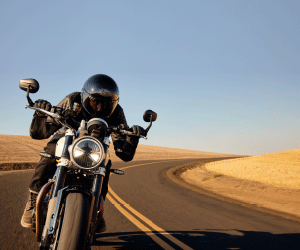The Yamaha YZF-R7, launched in 2022, emerges as a high-performance evolution inspired by the renowned MT-07, originally launched in 2014. Designed with the motto “Fun Master of Super Sport,” this supersport motorcycle combines the robust base of the MT-07 with a modern design and components dedicated to the sporting experience, offering an exciting ride for both beginners and more experienced riders.
Equipment specifically for performance
At the heart of the YZF-R7 is the 688cc twin-cylinder engine, water-cooled and with a 4-valve DOHC configuration, derived from the MT-07. This engine, known as “CP2”, relies on a consistent power delivery and vigorous torque at low and medium revs, thanks to Yamaha’s crossplane concept, which maximizes response and efficiency in practical regimes. In the case of the YZF-R7, adaptations were made to increase the feeling of power, such as the adjustment in the secondary ratio, from 43/16 in the MT-07 to 42/16 in the R7, and the inclusion of an assist and slip clutch, debuting this feature in models with CP2. To support this power, the stiffness of the swingarm pivot area was reinforced and the balance of the structure was adjusted, ensuring a firm and safe ride. The front suspension, a 41mm inverted fork, and the rear shock absorber were both designed specifically for this bike, improving shock absorption and handling. In addition, the R7 features high-quality components, such as the Brembo radial master cylinder for the front brakes and a full LCD panel, which makes it easy to monitor the bike’s data in real time.
Design and aerodynamics for exceptional control
Aesthetically, the YZF-R7 pays homage to the look of the R series, including the iconic YZF-R1, with a sleek and aerodynamic design. Its fairing shape was designed to reduce air resistance and allow a more aerodynamic riding position closer to the engine. The YZF-R7’s light and compact body, with a total weight of 188 kg, is only 4 kg heavier than the MT-07, while still remaining competitive within the middleweight supersport class.


Smooth handling and stability at high and low speeds
One of the strengths of the YZF-R7 is the balance between stability and lightness. With a wheelbase of 1395mm and a steeper caster angle, the R7 facilitates cornering while maintaining exemplary straight-line stability. The slightly forward-leaning riding position provides a sense of security, allowing the rider to immediately feel the contact with the ground and be able to transfer weight to the front wheel, essential for precise and confident cornering. When riding at low speeds, the bike reveals fluid handling, especially in urban areas. Even at high speeds, the R7 responds to the rider’s movements smoothly, creating a feeling of unity between the bike and the rider, especially in medium and high-speed corners.
Fun and dynamic riding
The high-capacity and easy-to-adjust front and rear suspension contribute to the excellent control of the YZF-R7. The adjustable front fork allows you to adjust preload and compression, adapting the suspension stiffness to the rider’s riding style, while the clutch system and throttle provide a direct response, giving the R7 a light and responsive feel. The CP2 engine provides a progressive increase in torque just above idle speed (around 1350 rpm), allowing for smooth acceleration without abrupt variations. On the highway, the bike maintains a speed of 100 km/h at 4000 rpm in sixth gear, showing the efficiency of the crossplane concept at medium speeds. The absence of riding modes or traction control allows the rider to directly enjoy the natural characteristics of the engine, adapting to any situation with ease.
Technical Specifications
Dimensions (L x W x H): 2070 x 705 x 1160 mm
Wheelbase: 1395 mm
Weight: 188 kg
Engine: 688cc twin-cylinder, 4-valve, DOHC, water-cooled
Maximum Power: 54 kW (73 PS) at 8750 rpm
Maximum Torque: 67 Nm at 6500 rpm
Fuel Tank Capacity: 13L
Transmission: 6-speed
Brakes: Dual front discs, single rear disc
Tires: Front 120/70-17, rear 180/55-17











